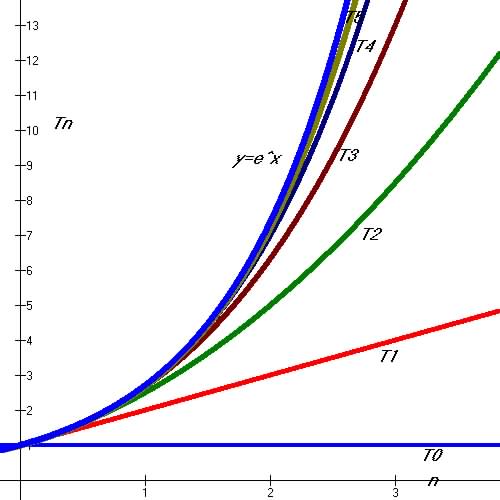| How the constant e is determined? Taylor series: |
![]()
(a) Write down the first six Taylor polynomial for the exponential function.
(b) Use a graphing device to plot each of the six functions.
(c) Use a. To approximate the value of the number e; compare with your calculator output.
Solution:
(a)
| n=0 | T0 (f) = |
| n=1 | T1 (f) = |
| n=2 | T2 (f) = |
| n=3 | T3 (f) = |
| n=4 | T4 (f) = |
| n=5 | T5 (f) = |
| n= big | e |
(b) plot of T0(f) to T5(f) (click image for larger graph)
 |
(c) ![]()
Calculator (ex = 2.71828182845904523536028747135266..)